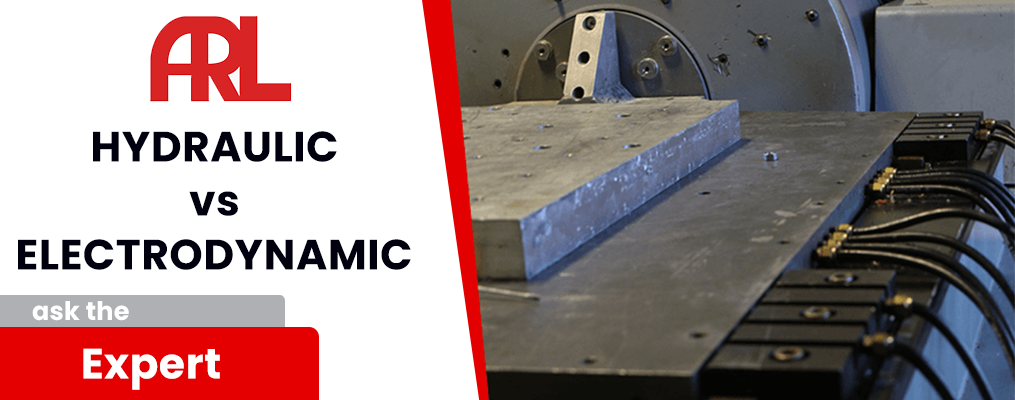Electrodynamic vs Hydraulic Shakers: Which is best for your product?
Joel Coffman2023-05-12T09:39:18-05:00Vibration testing is useful in designing high-quality, cost-effective products and shipping containers by accurately measuring sensitivity to sine or random vibrations. This testing is beneficial during product design, regulatory qualification, and production, helping to determine what degree items can physically and functionally withstand forces encountered in handling, transportation and service environments.
Two different types of shakers – electrodynamic shakers and hydraulic shakers – are commonly used to perform vibration testing. What is the difference between the two? Which type of shaker is best for your product?
An electrodynamic shaker uses technology that is analogous to a woofer speaker on a stereo system. The shaker uses a frequency generator to send a signal to a powerful current amplifier. This creates an electromagnetic force driving the armature of the shaker up and down the field coil located in the body of the shaker which is a large polarized electric magnet.
The hydraulic shaker uses a powerful hydraulic pump to create pressures of 2200 psi with flow rates of 55 gallons per minute to move the shaker head up and down. A proportional valve controls the vertical movement, driving the piston downward using negative control voltage and upwards using positive control voltage. The frequency generator of the vibration controller is outputting this voltage.
The two types of shakers are complementary technologies. The hydraulic shaker cannot respond as fast to control frequency but has a larger displacement (6 inches of head movement peak to peak). On the other hand, the electrodynamic vibration table can quickly respond to control frequency but its displacement is limited to the flux concentration of the field magnet (1-1.5 inches peak to peak).
The best way to differentiate the two types of shakers is to consider the types of vibrations they are simulating, as the different shakers have unique frequency ranges. A hydraulic shaker mimics the transportation vibrations found on a cargo ship rocked by waves in the ocean, a car going over a bridge, or a semi-trailer that hits a curb in the parking lot. The electrodynamic shaker is capable of higher frequencies, and simulates vibrations similar to a large church bell ringing or the booster stage of a rocket firing.
To sum things up, the best shaker to use for vibration testing depends upon what type of vibration the product is going to be subjected to in real life or what compliance standard it is being tested to conform. Each product and test process is unique, and it is important to utilize the resources and expertise of reliability engineers to develop the right test strategy for your products.






